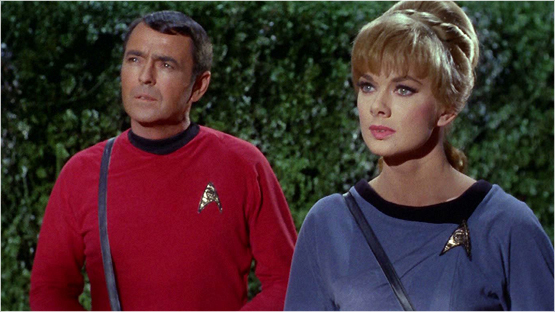The crew of the U.S.S. Enterprise is completing a treaty mission with the Maabas, a peaceful alien race not native to the star system they currently inhabit, as descendants of refugees from a great war long ago.
Several hundred thousand Maabas once took shelter on their new world, and have now been here for millennia. They do not travel the stars, but seek to explore from within. The Federation’s interest is in the Maabas’s great intellectual resources–their science, while behind in some areas, excels in others, and their philosophy is in line with that of the Federation.
But just as the pact is signed, the Enterprise is attacked by an unidentified vessel. Enough force is shown to keep the alien assailants at bay, but a new danger arises.
Their mysterious foes are the Kenisians–a race that used to inhabit the Maabas’s chosen world thousands of years ago, and who now want to take it back.
Order Crisis of Consciousness:
When Original Series five-year mission novels come up in the yearly release schedule, they tend to be my least favorite. Don’t get me wrong, I still enjoy them, but I definitely tend to prefer the continuation of the 24th Century shared universe, or more oddball novels such as those of The Lost Era or Seekers.
However, after reading the excellent novel Troublesome Minds, when Dave Galanter’s name pops up in the schedule, I sit up and take notice.
Like that earlier work, Crisis of Consciousness is an excellent novel. Galanter gets the character voices just right, and the alien characters are very interesting as well. I especially enjoyed the exploration of the Maabas and the Kenisians through the characters of Pippenge and the “multividual” Kenisian characters.

At its heart, Crisis of Consciousness is about how different cultures react to wrongs perpetrated against them in the past, as well as the concept of cultural memory. For the Kenisians, that cultural memory is very long and acute due to the fact that the voices from the past remain an active part of their culture for so long. The effect of the older generations influencing the younger towards conservatism is therefore greatly amplified among the Kenisians.
Much like Troublesome Minds, Crisis of Consciousness deals a lot with issues of the mind and telepathy. The Kenisians are a unique extension of the idea of Vulcan “katras” and what carrying around hundreds of disparate voices inside your head would mean.
We saw how much of a deleterious effect carrying just one katra around had on a human’s mind in Star Trek III: The Search for Spock; even a Vulcanoid mind would have tremendous difficulty with hundreds!

There is a lot to enjoy about this novel. We get some classic Kirk and Spock teamwork as each tries to figure out what the other would do, and in so doing, they are able to collaborate on a solution even while out of contact with one another.
We also get a budding romance between Scotty and Carolyn Palamas, whom you might remember from the classic episode “Who Mourns For Adonais?”. We learn how they first met and how they came to be so close by the time of that episode.
